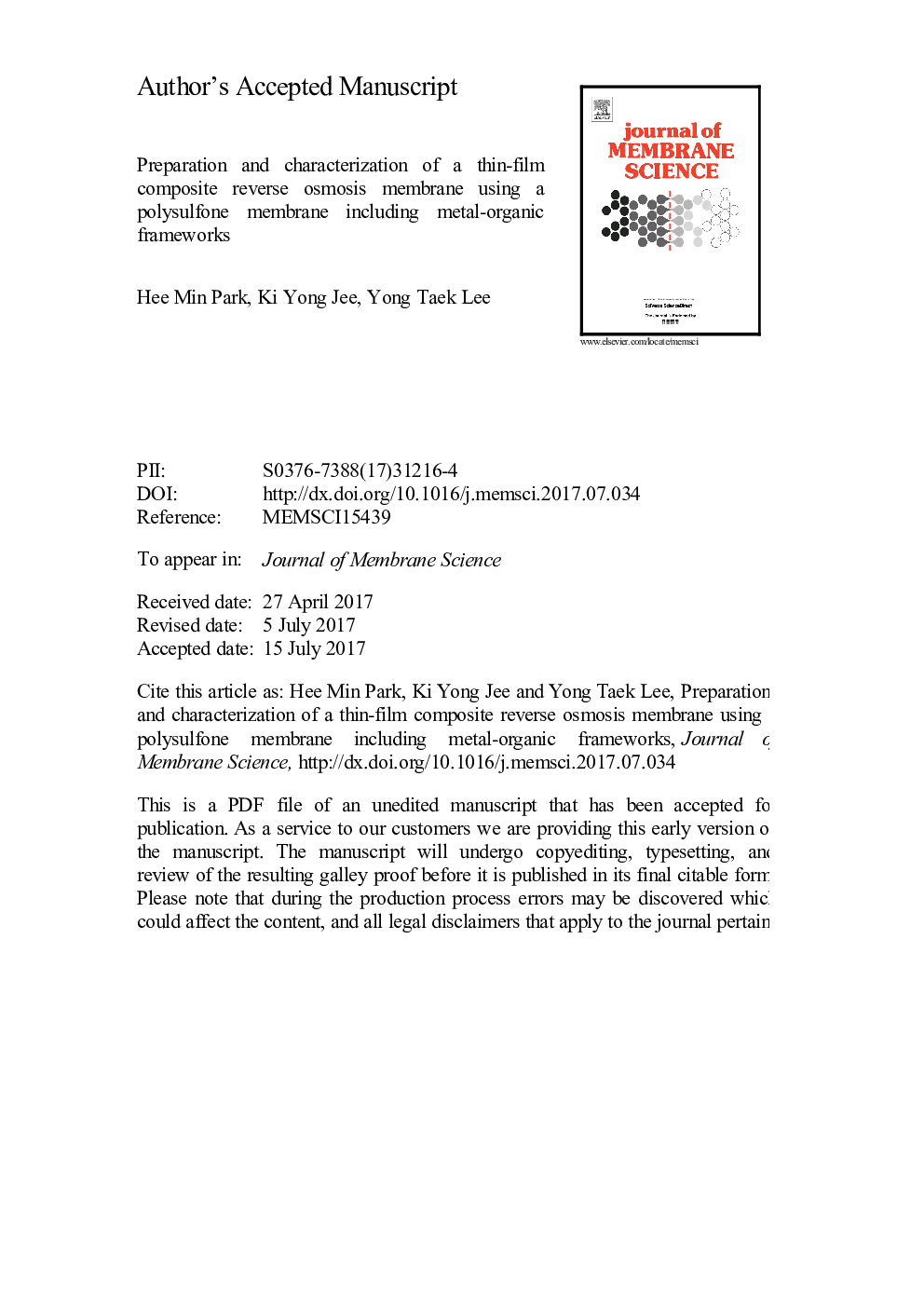| Article ID | Journal | Published Year | Pages | File Type |
|---|---|---|---|---|
| 4988503 | Journal of Membrane Science | 2017 | 25 Pages |
Abstract
The objectives of this paper were to elucidate the performance of a thin-film composite (TFC) reverse osmosis (RO) membrane by modifying the support layer. In order to improve the hydrophilicity and porosity of the support layer, we prepared a polysulfone (PSf) membrane containing an HKUST-1 [Cu3(BCT2)] metal organic framework (MOF) treated with sulfuric acid for the stability of water. N,N-dimethylformamide (DMF)/water was used as the solvent/non-solvent pair, and the TFC RO membrane was formed by the interfacial polymerization of m-phenylene diamine (MPD) in aqueous solution with trimesoyl chloride (TMC) in organic solution on the MOF/PSF support layer. The optimized concentration of MPD-TMC was investigated through XPS, and the manufactured membrane had a thin, smooth film when paired with a hydrophilic and porous support layer. The active layer thickness of novel membrane was 0.029 µm via FTIR analysis that the thickness compared to a commercial RO membrane having a thickness of 0.2 µm. Also, the novel membrane showed improved flux and fouling resistance compared to the TFC RO membrane with a PSF support layer, without altering the salt rejection property.
Related Topics
Physical Sciences and Engineering
Chemical Engineering
Filtration and Separation
Authors
Hee Min Park, Ki Yong Jee, Yong Taek Lee,
